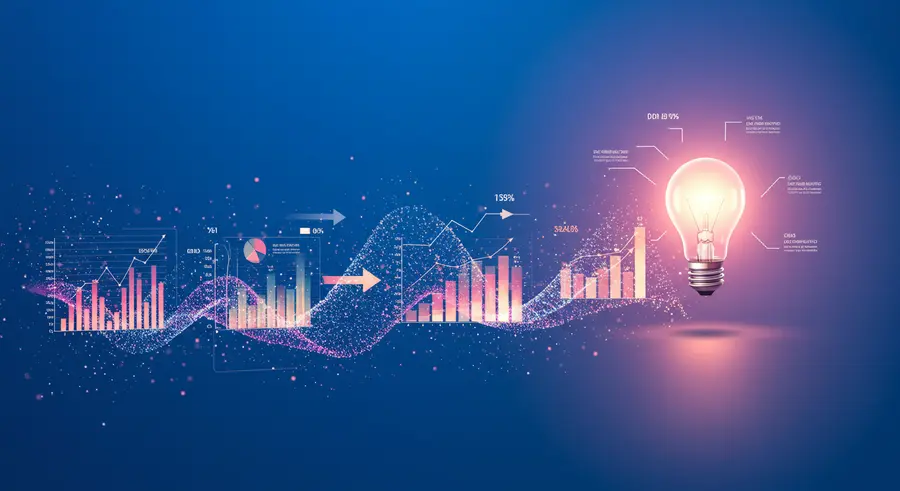Appearance

Welcome, data enthusiasts and aspiring communicators! 👋 In today's data-rich world, simply having data isn't enough. The true power lies in being able to tell a compelling story with that data – transforming raw numbers and complex analyses into clear, actionable insights that resonate with your audience. This is the art and science of Data Storytelling.
What Exactly is Data Storytelling? 🤔
Data storytelling is the process of combining three key elements:
- Data: The foundational facts, figures, and analyses.
- Narrative: The human-centric explanation of what the data means, why it matters, and how it connects to a broader context.
- Visuals: Charts, graphs, dashboards, and other visual aids that make the data easier to understand and more engaging.
Think of it as the bridge between cold, hard numbers and warm, impactful decisions. It's about moving beyond just presenting charts to truly guiding your audience through a journey of discovery that leads to a clear call to action.
Why is Data Storytelling CRUCIAL? 🚀
In a world overflowing with information, attention is a precious commodity. Data storytelling helps:
- Simplify Complexity: Large datasets can be overwhelming. A well-crafted story breaks down complex information into digestible, understandable chunks.
- Enhance Engagement: Stories are inherently more memorable and engaging than standalone facts. They capture attention and foster deeper understanding.
- Drive Action: When people understand the "why" behind the data, they are more likely to be persuaded and take the desired action.
- Build Trust: A transparent and clear narrative builds credibility and trust in your findings.
Key Ingredients for a Powerful Data Story 💡
Let's dive into the practical aspects of crafting your own data narratives:
1. Know Your Audience 🎯
Before you even touch a chart, understand who you're speaking to.
- What are their goals and concerns? Tailor your message to address their specific needs.
- What is their level of data literacy? Avoid jargon if they're not technical, or dive deeper if they are.
- What questions do they need answered? Your story should provide these answers.
Example: Presenting sales data to executives will differ from presenting it to the sales team. Executives might want high-level trends and financial impact, while the sales team might need granular data on regional performance and lead conversion.
2. Choose the Right Visualizations 📊
Visuals are the backbone of data storytelling. The wrong chart can confuse; the right one can illuminate.
- Bar Charts: Excellent for comparing categories.
- Line Charts: Ideal for showing trends over time.
- Pie Charts: Use sparingly for parts of a whole (and ensure they add up to 100%).
- Scatter Plots: Great for showing relationships between two variables.
- Heatmaps: Useful for displaying data density or correlation.
Pro-Tip: Avoid "chart junk" – unnecessary 3D effects, excessive legends, or distracting backgrounds. Simplicity and clarity are your best friends!
3. Craft a Compelling Narrative Arc 📖
Every good story has a beginning, middle, and end:
- Beginning (The Hook): Start with a question, a problem, or an intriguing observation from the data. Grab their attention!
- Middle (The Exploration): Present your data visualizations, guiding the audience through the insights. Explain what the data shows and why it's significant. This is where you connect the dots.
- End (The Resolution/Call to Action): Summarize your key findings, provide clear conclusions, and, most importantly, recommend actionable next steps based on the data. What should your audience do now?
4. Use Color and Text Intentionally 🌈✍️
- Color: Use color to highlight important data points, categorize information, or draw attention to anomalies. Be consistent and mindful of accessibility (e.g., color blindness).
- Text: Use clear, concise titles and labels. Annotate charts to point out key insights directly on the visual. A powerful headline can set the stage for your entire story.
5. Simplify and Focus ➡️
Resist the urge to show all the data. Focus on the most important insights that support your narrative. Too much information leads to cognitive overload. If you have secondary data, consider supplementary materials.
Connecting to "Effective Data Storytelling Techniques" 🔗
This article expands upon the foundational concepts introduced in our catalogue entry: Effective Data Storytelling Techniques. That resource provides a solid overview of using data visualization and narrative for compelling communication. Here, we've dived deeper into the 'how-to' by providing more actionable steps and a structured approach to building your data narratives. Both resources aim to empower you to transform raw data into knowledge that truly drives decision-making.
Real-World Example: Sales Performance Story 📈
Imagine you're presenting quarterly sales data:
- The Hook: "Our Q2 sales show a curious dip, despite an increase in marketing spend. Let's uncover why."
- The Exploration:
- Visual 1 (Line Chart): Overall sales trend over the last year, highlighting the Q2 dip.
- Visual 2 (Bar Chart): Sales breakdown by region, showing a significant decline in Region X.
- Visual 3 (Annotated Line Chart): Marketing spend vs. sales in Region X, revealing a campaign that performed poorly.
- Narrative: "While overall sales grew annually, Q2 saw a downturn primarily due to underperformance in Region X. A deep dive shows our 'Summer Blast' campaign in Region X failed to convert, unlike other regions."
- The Call to Action: "We recommend pausing the 'Summer Blast' campaign in Region X, re-evaluating its messaging, and reallocating resources to our successful campaigns in Regions Y and Z for Q3."
Conclusion: Become a Data Storyteller 🌟
Data storytelling is not just a skill for data scientists; it's essential for anyone who wants to communicate effectively in a data-driven world. By understanding your audience, choosing appropriate visuals, and weaving a clear narrative, you can unlock the true potential of your data, inspire action, and become a more influential voice in your field.
Start practicing today, and watch your insights transform into impact! ✨